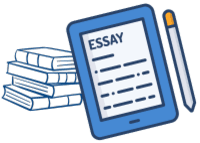Here you can read Our FREE Ultimate Guide on ASB 301 Module 3 Assignment 2 – You Be the Historian and see its solution.
Instructions of ASB 301 Module 3 Assignment 2
Overview
Through this assignment, you will become familiar with primary sources and how to critically assess them to draw conclusions about disease in the global history of humankind. Original historical documents serve as a key source of information for understanding health in the past. To make inferences about the past from these documents, research must carefully analyze, compare, and contrast different types of sources. In this assignment, you will pretend to be a historian hired by a university research team to investigate historical primary sources related to a specific infectious disease as part of an international collaborative project focused on the global history of infectious disease.
Anticipated Time Required: 4-5 hours
Instructions
1. Read these instructions to the end. Then return to Step 2 to get started.
2. Watch the Assignment 2 Introduction Video. (12 min) PDF file of Slides
Actions
3. Choose one of the following infectious diseases listed below:
-Leprosy
-Malaria
-Smallpox
-Syphilis (also called ‘yaws’ or ‘treponematosis’)
-Tuberculosis (also called ‘consumption’)
-Yellow fever (also called ‘yellow jack’ or ‘yellow plague’)
4. Use the World Digital LibraryLinks to an external site. (https://www.loc.gov/collections/world-digital-libraryLinks to an external site.) to search for three primary source documents that mention the disease you chose in Step 3. Find passages of text that provide historical information about the disease. Look specifically for excerpts that describe beliefs about the disease, descriptions of the effects of the disease, and/or response to and treatments for the disease. (1 hour)
5. Download and fill in the Assignment 2 Answer Sheet
Actions
Be sure to view the Assignment 2 Rubric so that you know how points will be assigned. (3-4 hours)
6. Turn in the completed assignment sheet. Title your assignment using LastnameFirstname_Assignment2.doc and ensure your file is in a .doc, .docx, .txt, or .pdf format. Click Submit Assignment button above to submit.
Example documents for students having difficulties accessing or using the World Digital Library website:
These documents contain the search term smallpox or small-pox.
Step-By-Step Guide: Introduction to ASB 301 Module 3 Assignment 2: You Be the Historian
The aim of this How To ASB 301 Guide will be to help students work through how to create research questions and hypotheses by analysing paleopathological literature. The ASB 301 Module 3 Assignment 2 – You Be the Historian is designed to help you develop inductive reasoning skills, synthesising evidence and constructing testable hypotheses. As a bioarcheologist, you will explore historical health patterns and help to understand how social, environmental, and demographic factors influence how people have fared in terms of their health in Britain.
Locating a Peer-Reviewed Article
The solved template for part one of the ASB 301 Module 3 Assignment 2: You Be the Historian will be posted by me for you.
- Look through academic databases like JSTOR, PubMed, or Google Scholar and find a peer-reviewed, empirical paper on coastal health and disease in former populations through paleopathology.
- Make sure that the article contains a detailed account description of data collection methods and results.
Identifying Central Research Questions
- Read the abstract and introduction of your selected article carefully to find the main research questions of your article.
- These questions should be written down in your own words, or if you are quoting, with quotation marks and page numbers.
Listing Methods Utilized
- Look at the data section of the article.
- Briefly list and describe the different ways in which data is collected, including skeletal analysis, radiographic imaging, isotopic analysis.
Describing Main Results
- Pinpoint the main results of the study.
- Write it down in your own words, thinking about your understanding of the two main results that you select.
Describing the Main Conclusion
- Either read the discussion or conclusion of the article.
- State the main conclusion and describe it in your own words but not exactly the authors’ words.
Evaluating the Study’s Results and Conclusions
- Think about how the study’s findings and conclusions expand our knowledge of how health and disease was understood during the past.
- Discuss in 4-6 sentences how these findings extend knowledge about social inequalities and health.
Evaluating the Limitations of the Study
- Learn to identify the limitations of skeletal evidence using course materials on paleopathology.
- Write these limitations in 4-6 sentences, and describe how these apply to the study’s conclusions you chose.
Discussing Additional Lines of Evidence
- Consult course materials related to the study of health and sickness in the past.
- Think and create with other lines of evidence used in the study, or brainstorm two other types of evidence that would make the conclusions stronger.
- Talk about which lines of evidence are supportive or contradictive of the paleopathological evidence.
Example
Closing
The ASB 301 Module 3 Assignment 2 – You Be the Historian—will help develop critical analytical skills as you examine and assess historical health research. Step by step, you will learn to synthesize evidence, construct hypotheses, and come to terms with the subtlety of making sense of health trends in ancient populations. In this exercise, you will get better at critically assessing scientific studies of past societies. This How To Owlisdom Guide will allow you to follow a systematic approach to the assignment; that is, each section will be treated with clear, coherent, well-supported arguments. This systematic approach will enable you to effectively complete the assignment and understand the complexities of studying global health history.





